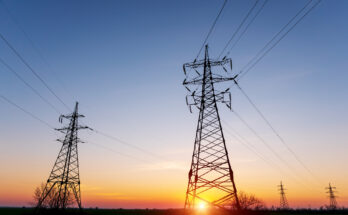The cost of the country’s largest offshore wind project has risen dramatically.
Dominion Energy Inc. announced recently that its proposal to build 180 wind turbines off the coast of Virginia Beach will cost ratepayers $2 billion more than expected.
The business predicted a $8 billion cost to Dominion consumers when it originally revealed its first plan for the Coastal Virginia Offshore Wind project in 2019. In a call with investors on Friday, Bob Blue, president and CEO of Dominion Energy, said the company now anticipates it to be closer to $10 billion.
“The cost rise may be linked to a variety of factors, including commodity and general cost pressures, as appears to be the case across a lot of businesses right now,” he explained.
The Dominion project is unusual in the United States since it is the first to be pushed forward purely by a state-controlled utility that intends to pass the financial burden onto its customers while also profiting from the permitted return on investment. It’s also the largest and most costly offshore wind farm ever planned in US seas.
The project’s higher cost might put more pressure on Dominion as it seeks permission from state regulators at the State Corporation Commission (SCC), who have previously stated that they will investigate the offshore wind cost forecasts.
Dominion also submitted their project approval application to the SCC on Friday. Despite the fact that the offshore project is in federal seas, Dominion will need the commission’s permission to move forward. Dominion executives voiced confidence in the wind farm’s advantages during their discussion with investors, citing more than 900 yearly jobs anticipated to be generated during construction alone.
On the call, David McFarland, director of investor relations, stated, “This project provides a feasible and needed opportunity for Virginia to accomplish its clean energy goals.”
Blue defended the project’s $87 per kilowatt hour levelized cost over its lifespan. According to him, this is less than the $125 per megawatt ceiling established by Virginia’s Clean Energy Economy Act of 2020.
That levelized cost might drop considerably lower if federal tax benefits are extended, he added.
He also cautioned against comparing Dominion’s costs to those of other non-state-regulated projects in the developing US offshore wind industry, noting that the project is helping to kick-start a supply chain that would make Virginia a regional centre for the offshore wind sector. Siemens Gamesa Renewable Energy announced last month that it would construct Virginia’s first offshore wind blade installation.
Meanwhile, at a cost of over $500 million, Dominion is developing a jack-up vessel to lift the massive turbines at sea, the first boat for the US wind industry to be able to fulfill the Jones Act restriction that only American-flagged ships may transport products between domestic ports. State regulators will decide whether it will be utilized for the coastal Virginia wind project and if customers would be responsible for the cost.
The US offshore wind sector, which is still in its infancy, has received major federal assistance from the Biden administration, which plans to construct 30 gigawatts of offshore wind power by 2030. To fulfill this goal, Biden’s Interior Department has been completing environmental assessments in a timely manner in order to get projects in line for government approval.
The Bureau of Ocean Energy Management began reviewing the Dominion offshore wind project’s environmental impact in July, and the utility expects clearance by 2023. Construction on the entire project is expected to be completed by 2026.
Political support has also aided the initiative in Virginia.
Last year, the state’s Democratic-led legislature approved the Clean Energy Economy Act, which deemed offshore wind to be in the public interest and signed by Democratic Gov. Ralph Northam. This has given Dominion’s plan more clout, despite critics’ concerns that it will limit state regulators’ ability to rein in excessive costs.
After last week’s election, company representatives were asked if the outlook for Virginia’s energy politics would alter. Glenn Youngkin, a Republican, was elected governor, and Republicans took control of the House of Delegates. Political movements are nothing new for the utility, according to Blue, who has seen numerous major adjustments in recent years.
“What has stayed consistent during that time is that our firm has maintained productive connections with members of both parties, and we see no reason for that to change,” he added.
Despite a history of clashes with Dominion over fossil fuel investments and economic constraints on customers, clean energy groups in Virginia have been supportive of the project.
Tim Cywinski, a representative for the Sierra Club Virginia branch, agreed with Dominion that the offshore wind project was required in Virginia and that the cost will come down as the sector grew. Until then, he believes that public and regulatory pressure will be enough to keep the utility in check.
“Every time you want to raise expenses, you have to have an extremely comprehensive rationale,” Cywinski added. “We must guarantee that sustainable energy development optimizes the advantages to ratepayers.” And that includes looking for the most cost-effective options.”





